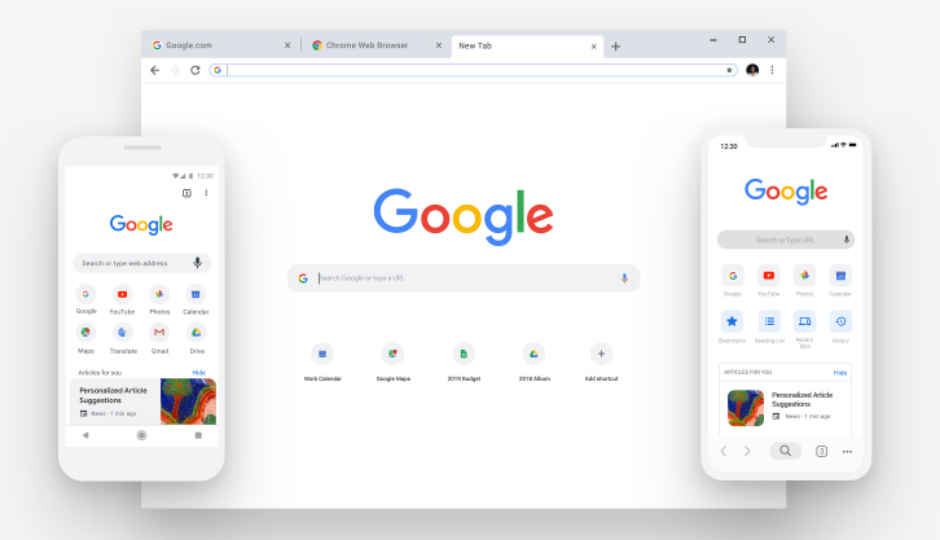Google Chrome 71 update with abusive ad blocking and billing protection, now rolling out
 Google is now rolling out the new Chrome 71 update for users on Mac, Windows and Linux. This new version of the internet browser brings some much-needed security updates and features. It will now automatically block abusive ads on persistently offending websites. The websites affected by this new implementation will be the ones that have ads or elements, which are shown as fake system dialogues or close button even after getting warnings from the Google Search Console’s Abusive Experiences Report. An example of such ads would be the ones that prompt users to download an updated driver for their system, which one might have seen while browsing the internet. As per Google, via 9To5Google, the new browser and ad removal will affect a “small number of sites with persistent abusive experiences,” mostly scammers and phishing tools that use such ads to steal a user’s data. Site admins and owners will be able to use Google Search Console's Abusive Experiences Report to discover if their websites are hosting such malicious ads and will have 30 days to take action on them before Chrome starts removing them automatically. Alongside the new abusive ad blocking feature, Chrome 71 also brings a new billing warning screen for pages that don’t describe how exactly the information being entered by the user will be used for making payments. The autoplay policy that Google announced earlier this year is also being implemented to the Web Audio API in Chrome 71. This will ensure that audio is muted on websites so that the user isn't blasted with audio as soon as a website loads. Additionally, a new API called ‘Intl.RelativeTimeFormat’ with the JavaScript engine is added with Chrome 71. This API will handle all relative time formats like “50 seconds ago” or “yesterday,” which are used on various websites for slightly boosted performance. In related news, Microsoft is said to be working on a new Chromium-based web browser that could replace Microsoft Edge as the default browser on Windows 10. As per a report, the browser is codenamed Anaheim and it's still unclear whether the browser will use Edge branding or if the user interface between Edge and Anaheim is different. According to statcounter, Microsoft Edge had 2.15 percent of market share as of November 2018.
Google is now rolling out the new Chrome 71 update for users on Mac, Windows and Linux. This new version of the internet browser brings some much-needed security updates and features. It will now automatically block abusive ads on persistently offending websites. The websites affected by this new implementation will be the ones that have ads or elements, which are shown as fake system dialogues or close button even after getting warnings from the Google Search Console’s Abusive Experiences Report. An example of such ads would be the ones that prompt users to download an updated driver for their system, which one might have seen while browsing the internet. As per Google, via 9To5Google, the new browser and ad removal will affect a “small number of sites with persistent abusive experiences,” mostly scammers and phishing tools that use such ads to steal a user’s data. Site admins and owners will be able to use Google Search Console's Abusive Experiences Report to discover if their websites are hosting such malicious ads and will have 30 days to take action on them before Chrome starts removing them automatically. Alongside the new abusive ad blocking feature, Chrome 71 also brings a new billing warning screen for pages that don’t describe how exactly the information being entered by the user will be used for making payments. The autoplay policy that Google announced earlier this year is also being implemented to the Web Audio API in Chrome 71. This will ensure that audio is muted on websites so that the user isn't blasted with audio as soon as a website loads. Additionally, a new API called ‘Intl.RelativeTimeFormat’ with the JavaScript engine is added with Chrome 71. This API will handle all relative time formats like “50 seconds ago” or “yesterday,” which are used on various websites for slightly boosted performance. In related news, Microsoft is said to be working on a new Chromium-based web browser that could replace Microsoft Edge as the default browser on Windows 10. As per a report, the browser is codenamed Anaheim and it's still unclear whether the browser will use Edge branding or if the user interface between Edge and Anaheim is different. According to statcounter, Microsoft Edge had 2.15 percent of market share as of November 2018.from Ten9Tech 1
Via Mishraji Technical

